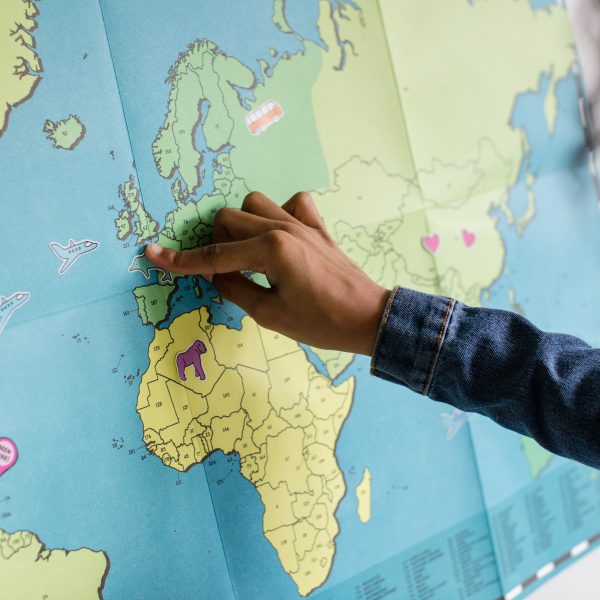What’s behind Goodstart’s strong occupancy performance in 2017/18?
opinion
The views expressed by contributors are their own and not the view of The Sector.

Goodstart Early Learning has confirmed a year-on-year increase in centre occupancy for the second year running in its recently published annual report. The Sector Founder Jason Roberts takes a look at why Goodstart is bucking the trend of many other providers reporting lower occupancy rates than previous years.
Goodstart uses a total network occupancy metric for external reporting purposes, which includes the impact of opened and exited or closed centres within the reporting year as opposed to a like-for-like measure which accounts only for centres that have been owned for one year or more.
Over the last two years Goodstart has opened 12 new centres and exited or closed 13.
This year It reported a 1.2 per cent increase year-on-year in occupancy across its 644 centres and built on an increase of 0.9 per cent recorded in the previous year, 2016/17.
This performance was impressive given the well reported occupancy challenges faced by other large providers this year and previous years.
For example, G8 Education reported falls in occupancy in 2016, 2017 and for the first half of 2018, and Think Education the other comparable listed operator experienced material reductions in “days sold”, its preferred definition, over the same period.
In addition, anecdotal evidence emerging from sector associations like the Australian Childcare Alliance and private equity owned businesses such as Guardian Early Learning and Affinity Education have lent support to the trends identified by G8 and Think.
So how has Goodstart managed to buck this trend?
Firstly, over the last several years Goodstart has been better positioned to compete in the marketplace than other large providers.
This is because, perhaps driven by the long shadow of ABC’s demise, Goodstart has worked incredibly hard to build a sustainable business whilst delivering on its not for profit mandate. In addition, unencumbered by concerns about growth and integration, it was able to respond quickly to signs of a deteriorating operating environment as early as 2015.
The other large players in the sector, at that time, were not so fortunate.
Having nearly doubled its network to 437 centres in 2014, the priorities at G8 Education were focussed squarely on integration. Affinity to a lesser extent were the same, but they also had to contend with an unwanted advance from G8. Think Education was coming to terms with being a listed company which is a difficult transition for any business, and Guardian and Only About Children were on the cusp of progressing change in ownerships.
Goodstart was clearly in a stronger position to focus all of their resources on navigating successfully the challenging years that were to come.
Secondly, Goodstart has been able to maintain affordability levels at its centres to a degree that other larger providers have not.
They have managed to cap fee increases to 3 per cent per annum for the last three years. This compares to sector average increases of around 4 per cent, and the larger companies in the sector increasing at 5+ per cent.
With Australian wage inflation moderate and a high number of new centres entering the sector, a competitive price point becomes increasingly important to the provider.
Goodstart recognised this early and were able to ratchet lower their annual fee increases to the 3 per cent level in a way that the other larger operators, for one reason or another, have either not been able to or decided not to and in so doing have maintained a relative level of affordability vis a vis their peers.
Thirdly, as its annual report notes, “Goodstart has made an organisational commitment not to exclude any child (at their centres) and provides additional support to our centres and children to achieve this.”
Although it is next to impossible to tease out just how the overall level of enrolments would have been impacted by a commitment of this nature, at the margin Goodstart would be inclined to see an individual enrolment sustained – or secured – even if the economic contribution of that enrolment was negative more often than would be the case at a less well capitalised not-for-profit or bottom line focussed for profit provider.
Goodstart’s occupancy therefore, will reflect the additional enrolments secured through inclusion-related initiatives to a degree not matched by other larger for profit providers.
So to conclude, Goodstart’s occupancy outperformance has been largely driven by a set of circumstances generated by the business itself at a time when it’s peers have been forced to focus their priorities elsewhere and also to some degree an inclusion centric mandate that promotes a broader approach to enrolment than it’s for-profit and less well capitalised not-for-profit peers would otherwise apply.
There is no doubt that the last three years has seen Goodstart come of age.
Any questions about its ability to survive challenging operating conditions should now be put to rest.
Looking forward, it appears well positioned to capitalise from any additional demand for its services generated by the Child Care Subsidy and the eventual improvements in sector operating conditions that will come when the supply of new centres starts to moderate.
Popular

Policy
Practice
Provider
Quality
NSW Government launches sweeping reforms to improve safety and transparency in early learning
2025-06-30 10:02:40
by Fiona Alston

Quality
Provider
Policy
Practice
WA approved provider fined $45,000 over bush excursion incident
2025-07-01 07:00:01
by Fiona Alston

Workforce
Policy
Quality
Practice
Provider
Research
ECEC must change now, our children can’t wait for another inquiry
2025-07-02 07:47:14
by Fiona Alston













